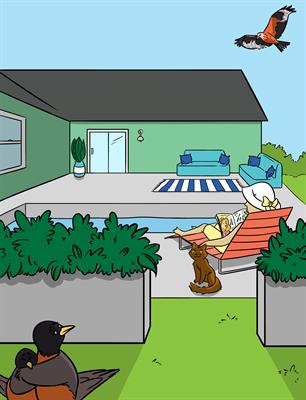
People and Wildlife
Collection Editors
Becky Thomas, Mark FellowesViews
451,450 viewsParticipating Sections
Submission Deadline
Closed
Articles

Biodiversity
22/04/2020
Cities: How Do Some Birds Thrive There?
Authors
Nishant Kumar, Urvi Gupta, Yadvendradev V. Jhala, Qamar...
Biodiversity
19/09/2019
The Mysterious Case of the Disappearing Javan...
Authors
Erin Rose Harrington, Brian Daniel Gerber
Biodiversity
13/09/2019
Why Didn’t the Bird Cross the Road?
Authors
Christopher D. Johnson, Daryl Evans, Darryl Jones
Biodiversity
12/07/2019
Human Activities Help Alien Species to Invade the...
Authors
Ioannis Giovos, Stelios Katsanevakis, Marta Coll, Chiara...
Biodiversity
21/06/2019
How Can We All Help Conserve Nature?
Authors
Marcia C. Muñoz, Mireia Valle, Rachel L. White, Rodolfo...
Biodiversity
03/06/2019
Are City Kids Missing Out on Nature?
Authors
Kathryn L. Hand, Claire Freeman, Philip Seddon, Mariano...About this collection
We live in a world filled with fascinating plants and animals, each adapted to environments that range from freezing arctic tundras to humid tropical forests. Our world is also home to more than seven billion people, a number added to every day. Each of us puts pressure on the environment and the space left for wildlife. At its most extreme, every aspect of the environment has been influenced by people's choices, and nowhere more so than the urban areas where most people live. Urban areas are full of people playing and working. They are also full of animals and plants, often living secret lives that go unnoticed. Our interactions with wildlife are often determined by our desire to get close to nature, or sometimes our fear of it.When people think of urban areas they mostly imagine big cities, but these areas extend into more ‘suburban’ environments made up of houses, gardens, roads and parks. These landscapes are often filled with wildlife that represent a combination of local plants and animals with species from other places that are planted or escaped, creating a unique habitat linked directly with the people who live there. There are many challenges for the species found here, but many opportunities too. People can individually affect the environment, for example, by owning pet cats who are like mini tigers preying on the local birds; or by leaving out trash and drawing in herds of peccaries or families of raccoons. But it is in combination that we have the greatest impact. For example, houses and street lamps generate lots of light noise which can distract moths from their usual habits, and the roads and streets we build divide up the habitat making it harder for wildlife to move around and find resources. We in turn are also affected by the environment; living in nature-filled areas can positively affect our health and our well-being, yet interactions with certain species (like tics or mosquitoes) can bring disease or discomfort.
Scientists and ‘citizen scientists’ (expert members of the public) around the world are exploring our interactions with wildlife and nature in urban areas, and here we explore some of this research. This collection of articles aims to highlight some of the amazing wildlife that live alongside us and we explore how we can positively and negatively affect these species.
Would you like to submit to this collection?
For researchers interested in submitting to this Collection, please consult our author guidelines and check that you have all the essentials included before submitting








